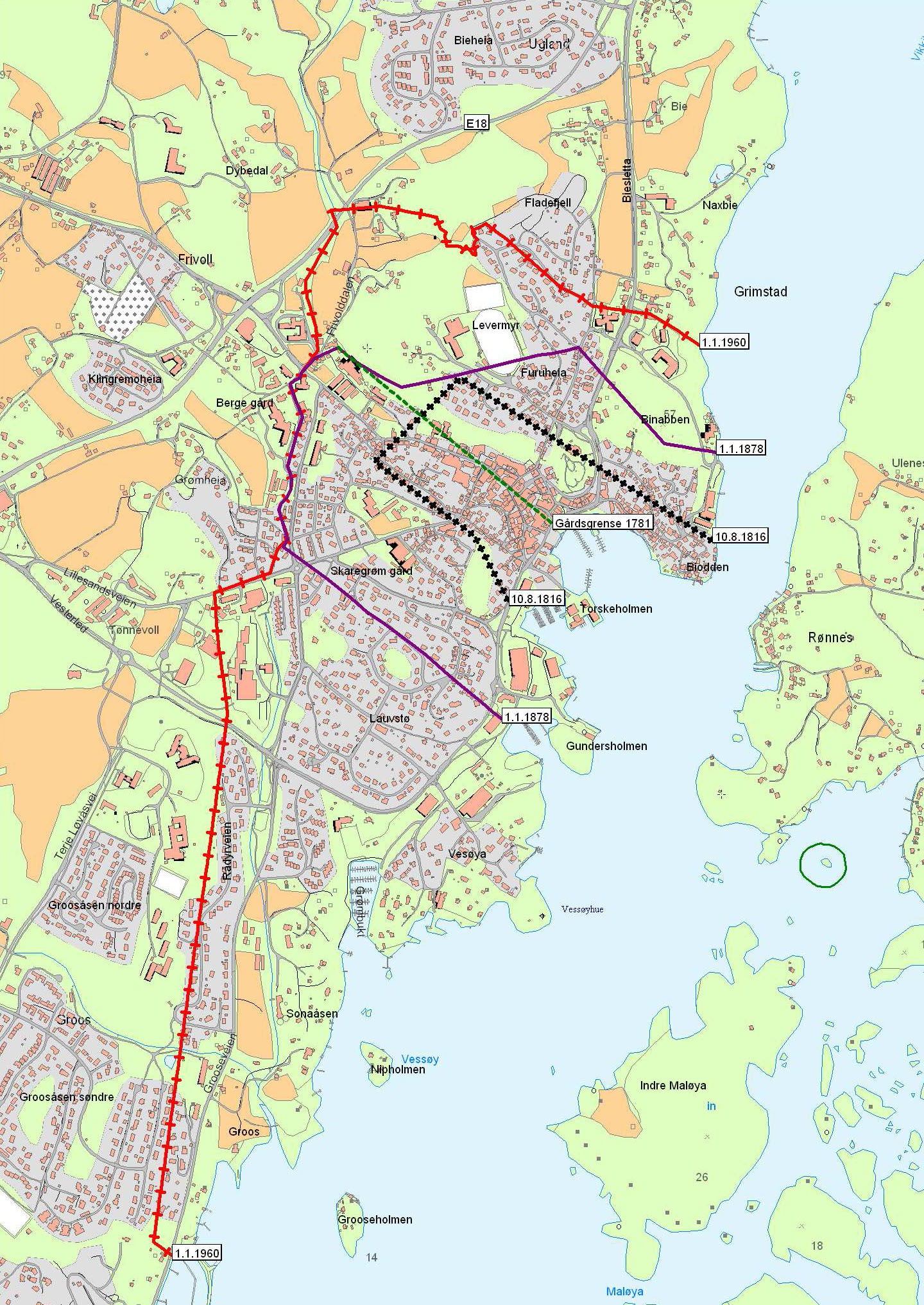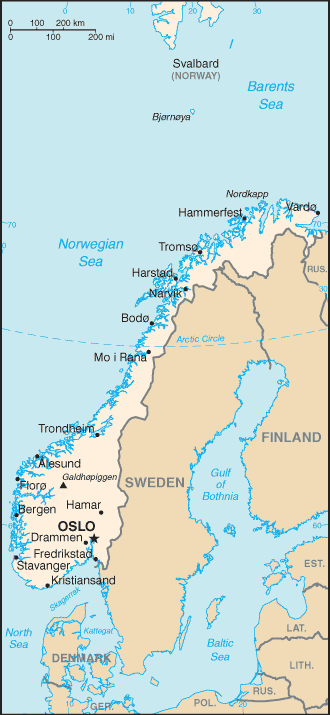|
Grimstad (town)
Grimstad () is a town in Grimstad municipality in Agder county, Norway. The town is also the administrative centre of the municipality. It is located on the Skaggerak coast in Southern Norway along the Groosefjorden, between the towns of Arendal (to the northeast) and Lillesand (to the southwest). The town has a population (2019) of 13,543 and a population density of . In Norway, Grimstad is considered a which can be translated as either a "town" or "city" in English. Grimstad Church is located on a small hill overlooking the town's harbour. The University of Agder is located in the town as well. History The village of ''Grømstad'' existed for a long time as part of the ancient prestegjeld of Fjære. It is reportedly first mentioned as a harbor in the 16th century. Eight years after he was deposed, King Christian II of Denmark–Norway (1513–1523) attempted to recover his kingdoms. A tempest scattered his fleet off the Norwegian coast, and on 24 October 1531, they too ... [...More Info...] [...Related Items...] OR: [Wikipedia] [Google] [Baidu] |
List Of Towns And Cities In Norway
This is a list of towns and cities in Norway. The Norwegian language word means a town or city–there is no distinction between the two words as there is in English. Historically, the designation of town/city was granted by the king, but since 1996 that authority was given to the local Municipal council (Norway), municipal councils for each municipality in Norway. In Norway today, there are 108 towns/cities, but they have no legal authority or powers and they are not an administrative body, it is simply a designation. All local government rests with the municipality which may or may not have a town/city located within it. History Historically, the words (market town), (small seaport), or were used for a town or city. Each of these were granted certain special Town privileges, rights based on their classification and they did hold administrative authority within their borders. A ladested was subordinate to a kjøpstad and over time some of the ladesteds were "upgraded" to t ... [...More Info...] [...Related Items...] OR: [Wikipedia] [Google] [Baidu] |
Arendal (town)
Arendal () is a city in Agder county, Norway. The city is the administrative centre of the municipality of Arendal and the seat of the County Governor of Agder. The city also includes a small area in the neighbouring municipality of Grimstad as well. In Norway, Arendal is considered a which can be translated as either a "town" or "city" in English. The city has a population (2019) of 37,815 and a population density of . The city does cross municipal boundaries due to its growth over the years. In 2019, of the city with 112 residents were located in neighbouring Grimstad municipality. This area was mostly north of the Fevik area in Grimstad, south of the city centre. The offices of UNEP/GRID-Arendal are located in the town of Arendal. There are several churches in the city of Arendal including Trinity Church, Bjorbekk Church, Barbu Church and Stokken Church. History The village of Arendal was established in the middle of the 16th century, and was then called . Initial ... [...More Info...] [...Related Items...] OR: [Wikipedia] [Google] [Baidu] |
Frederick I Of Denmark
Frederick I ( Danish and ; ; ; 7 October 1471 – 10 April 1533) was King of Denmark and Norway. He was the last Catholic monarch to reign over Denmark and Norway, when subsequent monarchs embraced Lutheranism after the Protestant Reformation. As king of Norway, Frederick is most remarkable in never having visited the country and was never crowned as such. Therefore, he was styled ''King of Denmark, the Vends and the Goths, elected King of Norway''. Frederick's reign began the enduring tradition of calling kings of Denmark alternately by the names Christian and Frederick. Background Frederick was the younger son of the first Oldenburg King Christian I of Denmark, Norway and Sweden (1426–81) and of Dorothea of Brandenburg (1430–95). Soon after the death of his father, the underage Frederick was elected co-Duke of Schleswig and Holstein in 1482, the other co-duke being his elder brother, King John of Denmark. In 1490 at Frederick's majority, both duchies were divide ... [...More Info...] [...Related Items...] OR: [Wikipedia] [Google] [Baidu] |
Denmark–Norway
Denmark–Norway (Danish language, Danish and Norwegian language, Norwegian: ) is a term for the 16th-to-19th-century multi-national and multi-lingual real unionFeldbæk 1998:11 consisting of the Kingdom of Denmark, the Kingdom of Norway (including the then Norwegian overseas possessions: the Faroe Islands, Iceland, Greenland, and List of possessions of Norway, other possessions), the Duchy of Schleswig, and the Duchy of Holstein.Feldbæk 1998:21f, 125, 159ff, 281ff The state also claimed sovereignty over three historical peoples: Frisians, Gutes and Wends.Feldbæk 1998:21 Denmark–Norway had several colonies, namely the Danish Gold Coast, Danish India (the Nicobar Islands, Serampore, Tharangambadi), and the Danish West Indies.Feldbæk 1998:23 The union was also known as the Dano-Norwegian Realm (''Det dansk-norske rige''), Twin Realms (''Tvillingerigerne'') or the Oldenburg Monarchy (''Oldenburg-monarkiet''). The state's inhabitants were mainly Danish people, Danes, Norwegian p ... [...More Info...] [...Related Items...] OR: [Wikipedia] [Google] [Baidu] |
Christian II Of Denmark
A Christian () is a person who follows or adheres to Christianity, a monotheistic Abrahamic religion based on the life and teachings of Jesus Christ. Christians form the largest religious community in the world. The words '' Christ'' and ''Christian'' derive from the Koine Greek title (), a translation of the Biblical Hebrew term '' mashiach'' () (usually rendered as ''messiah'' in English). While there are diverse interpretations of Christianity which sometimes conflict, they are united in believing that Jesus has a unique significance. The term ''Christian'' used as an adjective is descriptive of anything associated with Christianity or Christian churches, or in a proverbial sense "all that is noble, and good, and Christ-like." According to a 2011 Pew Research Center survey, there were 2.3 billion Christians around the world, up from about 600 million in 1910. Today, about 37% of all Christians live in the Americas, about 26% live in Europe, 24% live in sub-Saharan Afric ... [...More Info...] [...Related Items...] OR: [Wikipedia] [Google] [Baidu] |
Deposition (politics)
Deposition by political means concerns the removal of a politician or monarch. ORB: The Online Reference for Medieval Studies, 1999 It may be done by coup, impeachment, invasion, or forced .The deposition of Richard II , J.P.Sommerville, History Department, University of Wisconsin The ... [...More Info...] [...Related Items...] OR: [Wikipedia] [Google] [Baidu] |
Fjære
Fjære is a List of former municipalities of Norway, former municipality in the old Aust-Agder counties of Norway, county in Norway. The municipality existed from 1846 until 1971. It was located to the north of the Grimstad (town), town of Grimstad. The name is still used to refer to that area, which is now a part of Grimstad municipality in Agder county. The administrative centre of Fjære was the village of Vik, Grimstad, Vik, just east of the historic Fjære Church. Other villages in Fjære included Fevik, Dømmesmoen, Frivold, Kroken, Grimstad, Kroken, and Rønnes. History The municipality of Fjære was created in 1846 when the old municipality of Øyestad was divided. Initially, Fjære had a population of 2,806. The first municipal council met at a farmhouse at Bringsvær, north of Vik, Grimstad, Vik. In 1886, the council began meeting in the village of Vik. On 1 January 1878, a part of Fjære located adjacent to the Grimstad (town), town of Grimstad (population: 948) was ... [...More Info...] [...Related Items...] OR: [Wikipedia] [Google] [Baidu] |
Prestegjeld
A ''prestegjeld'' was a geographic and administrative area within the Church of Norway (''Den Norske Kirke'') roughly equivalent to a parish. This traditional designation was in use for centuries to divide the kingdom into ecclesiastical areas that were led by a parish priest. ''Prestegjelds'' began in the 1400s and were officially discontinued in 2012. History Prior to the discontinuation of the ''prestegjeld'', Norway was geographically divided into 11 dioceses (''bispedømme''). Each diocese was further divided into deaneries (''prosti''). Each of those deaneries were divided into several parishes (''prestegjeld''). Each parish was made up of one or more sub-parishes or congregations (''sogn'' or ''sokn''). Within a ''prestegjeld'', there were usually one or more clerical positions ( chaplains) serving under the administration of a head minister (''sogneprest'' or ''sokneprest''). In 1838, the formannskapsdistrikt () was the name of a Norwegian self-governing municipalit ... [...More Info...] [...Related Items...] OR: [Wikipedia] [Google] [Baidu] |
University Of Agder
The University of Agder (), formerly known as Agder College and Agder University College, is a public university with campuses in Kristiansand and Grimstad, Norway. The institution was established as a university college (Scandinavia), university college (''høgskole'') in 1994 through the merger of the Agder University College and five other colleges, including a technical college and a nursing school, and was granted the status of a full university in 2007. History The idea of a university in the Agder region is not completely new. In his short period as ruler of the union of Denmark–Norway, Johann Friedrich Struensee planned on reforming the University of Copenhagen. He ordered Bishop Johann Ernst Gunnerus of Trondheim to develop more detailed plans. Gunnerus presented a proposal in 1771 in which he suggested establishing a new university in Norway, and placing it in Kristiansand. The motives for suggesting Kristiansand as a university town have been debated. Regardles ... [...More Info...] [...Related Items...] OR: [Wikipedia] [Google] [Baidu] |
Grimstad Church
Grimstad Church () is a parish church of the Church of Norway in Grimstad Municipality in Agder county, Norway. It is located in the town of Grimstad. It is the church for the Grimstad parish which is part of the Vest-Nedenes prosti (deanery) in the Diocese of Agder og Telemark. The large, green, wooden church was built in a cruciform design in 1881 using plans drawn up by the architect Henrik Thrap-Meyer. The church seats about 1,000 people, making it one of the largest wooden churches in Norway. History The first church in the growing town of Grimstad was built in 1849 on a prominent hill overlooking the harbour. The new church was consecrated on 2 December 1849. The church was designed by the architect Wilhelm Hanstein. The church was not very large, so it was quickly outgrown by the town. There was also a cemetery surrounding the church, but just like the original church, it quickly filled up and it is no longer used. A new cemetery was opened in Frivoll in 1872 and it has ... [...More Info...] [...Related Items...] OR: [Wikipedia] [Google] [Baidu] |
Population Density
Population density (in agriculture: Standing stock (other), standing stock or plant density) is a measurement of population per unit land area. It is mostly applied to humans, but sometimes to other living organisms too. It is a key geographical term.Matt RosenberPopulation Density Geography.about.com. March 2, 2011. Retrieved on December 10, 2011. Biological population densities Population density is population divided by total land area, sometimes including seas and oceans, as appropriate. Low densities may cause an extinction vortex and further reduce fertility. This is called the Allee effect after the scientist who identified it. Examples of the causes of reduced fertility in low population densities are: * Increased problems with locating sexual mates * Increased inbreeding Human densities Population density is the number of people per unit of area, usually transcribed as "per square kilometre" or square mile, and which may include or exclude, for example, ar ... [...More Info...] [...Related Items...] OR: [Wikipedia] [Google] [Baidu] |






